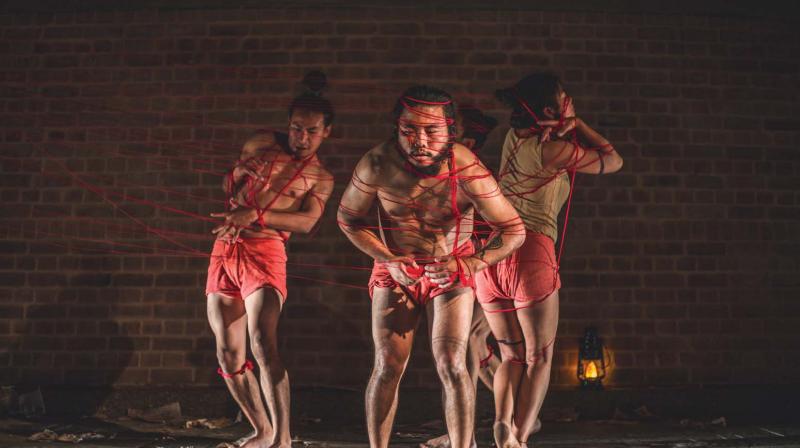The silent skirmish

A dance drama called Nerves daringly depicts the struggles faced by our brethren in Manipur as well as offers glimpses into their unique traditions and way of life.
Nerves, directed by Surjit NonGmeikapam who hails from Manipur, is a drama performance with a difference. Though silent, the play is a crucial channel of communication, as it’s is not just about the troupe’s dance and drama techniques but also about their emotions, guilt, helplessness and vulnerability. Surjit asserts, “Nerves is about the silent pain of the people of Manipur.” This dance therapist-cum-director explains his vision, “It is raw, authentic and revolves around the idea of indigenous importance, which can also be applied universally. There are elements from our way of life, carefully handpicked from different social or religious backgrounds in my homeland. I have involved ideas derived solely from our emotions.”
Surjit, who has explored a lot of dance forms like Kathak, Kalaripayattu, Manipuri, Contemporary and more, stressed on bringing out the disturbed senses from their inner self towards the outer self and expressing them physically. A few of the performers are first-timers so it is their debut experience with the contemporary dance form. Motivated to speak about the happenings in their motherland, these first-timers also took on the challenge to be part of the play. He adds, “I believe that sharing our roots, our ways, tradition and culture with the world is very important. It is important that the rest of the world knows about our existence because I trust that we have a lot to contribute. By honouring our ethnic background, I believe we will also come to an understanding with our ‘self.’
That’s why it was important for me to find contemporary artistes, who would thoroughly understand the real struggles of today’s society and to be able to express them through movements.”
Their encounter with intensity and struggle is perfectly embedded in this play to portray the cause and repercussions of insurgency in their motherland Manipur. Thongram Bindiyarani Devi, one of the artistes, shares, “We are using many symbolic props like bamboos, with which to enhance our movements. While most critics appreciated our approach, we made a few changes after the first performance. We added a little more life to it, along with some technical choreography.”
Yanglem Luckyson Singh, another performer, explains, “We express our pain and emotions through the performance of this silent drama. The music composer and light designer helped us to convey the message perfectly. We, as performers, have explored the frustration and helplessness of our people; the silent torture that each of us go through, we have tried to appropriate that into our performance. Although the roots of this piece are grounded in Manipur and the Northeast of India, the struggle is universal; the struggle and the search for peace.”

